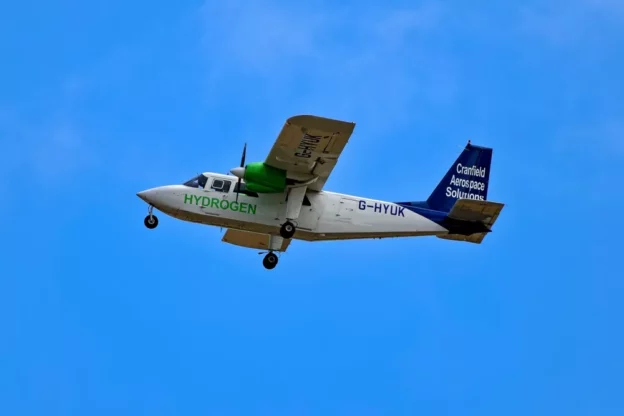Cranfield Aerospace Solutions has announced the integration of a hydrogen fuel cell system into the airframe of a Britten-Norman BN-2 Islander aircraft with successful results.
Britten-Norman BN-2 Islander aircraft
The company has incorporated this system together with an engine inside the aircraft’s nacelle, creating a highly efficient and safe hydrogen-based propulsion system. In addition, the company has collaborated closely with leading organizations such as Reaction Engines Y EvolitoThe transformation of this nine-seat aircraft, funded in part by the British government’s Fresson Project, will be completed this month and will lead to a flight test program scheduled for later this year.
According to Jenny Kavanagh, CAeS strategy director, the company made a strategic decision to address thermal management and packaging challenges first, before proceeding with flight testing. This approach ensured the resolution of issues critical to the commercial viability of the project.
The future of hydrogen fuel cells
With a view to expanding the application of this technology, CAeS has plans to integrate the hydrogen fuel cell propulsion system into various aircraft models. A recent example of this expansion is the agreement with Dronamics to supply HFC propulsion systems for its Black Swan cargo drone, with a backlog exceeding 1,300 units and deliveries to begin in 2026.
To further enhance the value proposition of this system, CAeS continues to work on optimizing subsystems and the overall user experience, ensuring superior operational performance and increased customer satisfaction.
Innovation and aeronautical engineering
The innovative design of the 240 kW HFC system not only provides 110% of the power of the original power of the original engine but also efficiently integrates all the necessary components within a limited space, meeting strict safety standards.
The ingenious arrangement of components, including cooling systems, electronics and wiring, within the nacelle demonstrates the technical skill of CAeS engineers in overcoming significant design challenges.
In addition, the front section of the nacelle houses a variety of components critical to the operation of the HFC system, while the rear section handles power distribution and other vital aspects of the system.
Don’t miss any of our posts and follow us on social media!
Inspenet.com YouTube LinkedIn Facebook Instagram
Source: Cranfield Aerospace Solutions
Photo: shutterstock

